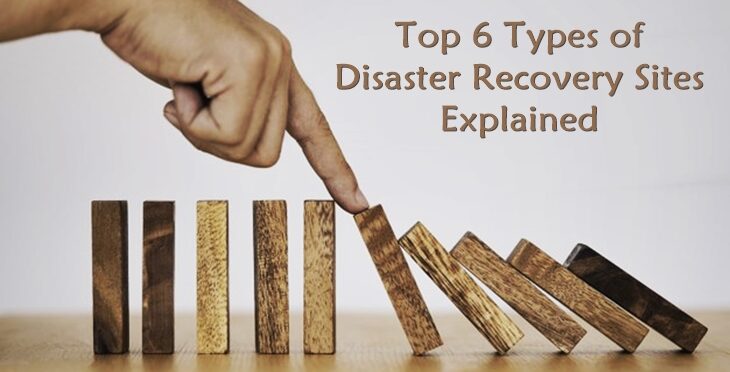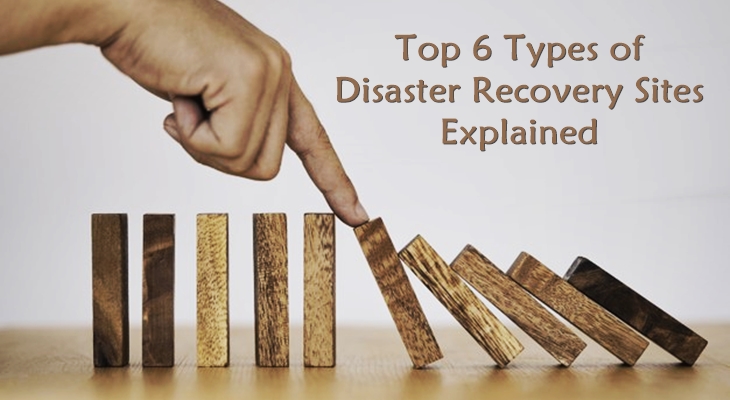We are currently in a world where disaster can strike at any point in time. No one had expected so many disasters to take place simultaneously. Scenarios such as the most recent pandemic, earthquakes, and wildfires have triggered a reaction among many enterprises to have a disaster recovery plan. For enterprises that deal in physical entities, having recovery sites can be a tussle. But for enterprises that mainly deal with data, it is feasible to have disaster recovery sites.
A disaster recovery site is essentially a backup plan. Here enterprises can shift their base of operations in the event of a disaster. They can either be natural or man-made.
The disaster recovery site can be a physical office-space where the employees can shift base and operate from.
It can also be a remote server that stores the data of the enterprise. Here, the company can switch to the new servers to use and store data if the base location is affected.
Enterprises have to be always on and ready to serve their customers. Any disruption in operations affects the company in many ways. Such disruptions could include but are not limited to:
- Loss of revenue,
- Interruption in service delivery,
- Destruction of company property or intellectual-property loss,
- Damaged business reputation due to loss of credibility from the customers.
To avoid these circumstances, enterprises can plan and opt for disaster recovery sites. There are certain parameters to consider when planning for a disaster recovery plan. They include the following:
The disaster recovery site must be at a location that is different from the base location. It must also be on another grid. This ensures that the recovery site is also not affected by the same issues that have affected the base location.
The site must be able to connect quickly and in as little time as possible. This is to ensure business continuity, and there is as little loss and downtime as possible.
It is necessary to prioritize which business operations need to be included in the backup so that those businesses are the first ones to be running in the event of a disaster.
Based on the above points, the budget has to be decided for the organization. The disaster recovery sites are expensive, and enterprises have to plan and budget for them accordingly based on their needs.
With the disaster recovery site in place, enterprises can ensure the least downtime and keep delivering to their customers. This is why it has become imperative for enterprises today to have a disaster recovery site. Else, the fierce competition will affect the sustainability of the company.
There are various types of disaster recovery sites based on certain criteria. The criteria include the type of location of the recovery site and the usability type.
Based on location, the disaster recovery sites are the following:
Some organizations prefer to build and maintain the disaster recovery sites on their own. Hence, there is no third-party involved in operating and maintaining the recovery site. These are known as internal sites.
They are cost-intensive for companies, but some companies with the available capital prefer these sites. This allows them complete control over the access and usability of resources and helps safeguard data from attacks.
External site is the preferred option of many only for its ease of use and management. The entire operation is owned and operated by another company.
They only provide a part of the company's infrastructure who wishes to purchase some space for their disaster recovery.
This provides flexibility if the company wants to scale up or scale down the resources consumed for disaster recovery.
Mobile sites are not that popular yet but are slowly picking up. It mainly include a movable entity, most times a trailer that contains the resources needed to store the data. It can be plugged into any power source to gain access to the information.
Some companies prefer mobile sites if they wish to physically access the disaster recovery site and be able to relocate it at any moment.
Apart from location, there are types of disaster recovery sites that are based on usability. They are:
Hot site is mostly preferred by companies who are highly dependent on their data, and it is the basis of their operation. They cannot afford to lose any of their data, and down time in accessing it can be business-critical.
Hot sites are where the entire environment is already up and running. It is only a matter of connecting to the servers there to get back online.
The servers present there are running in parallel with the main servers. The data in the servers are continuously being backed up through the hot backup method.
The effective loss of data and delay can be up to 15 minutes, which can be acceptable to organizations. Operating a hot site is almost like running two systems at the same time, and hence they increase company costs substantially.
Cold site is there for companies to use, but it is not entirely set up. It is ready and kept available but in a dormant state.
There is no backup being conducted here, and the facilities are mostly just systems that need to be turned on and ready to use. Network connectivity is also the bare minimum.
Companies prefer cold sites when they do not have much data-intensive operations and can afford the luxury of delays. Cold sites are also preferred by companies who are looking to keep the costs low.
Warm site is the balance of both hot and cold sites. Here the infrastructure exists and is running, but intermittently.
The data backup is conducted in certain intervals, which can range from either days or weeks. It is also ready and available in case an urgent backup needs to be conducted when the disaster might be striking.
Warm sites have limited resources available to keep the costs low. The network connectivity is also limited to facilitate operations but only to a certain limit. The cost range of warm sites is between hot and cold sites.
Conclusion
In the current age of digital transactions and data-driven business operations, safeguarding the data is becoming imperative for organizations globally.
Disaster recovery sites are just one way for enterprises to ensure that their data is safe and easily accessible for business continuity.
If you are an enterprise looking for disaster recovery sites, the information mentioned earlier will be handy to make an informed decision. This will help you decide which disaster recovery site will be the best match for your organization.
You May Also Like to Read:
14 Best Cloud Infrastructure Automation Tools





